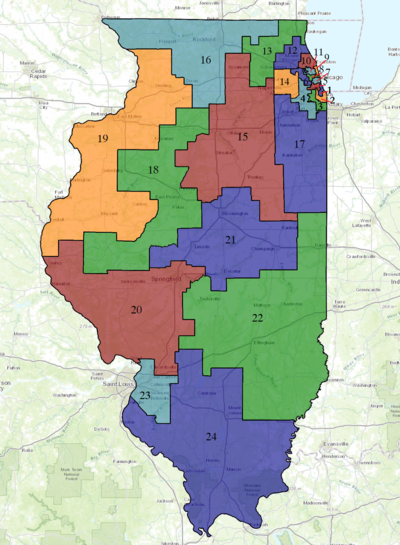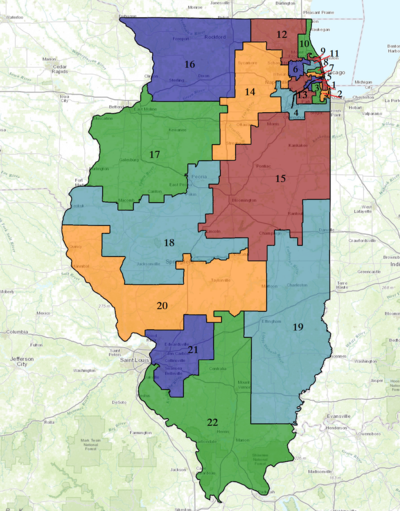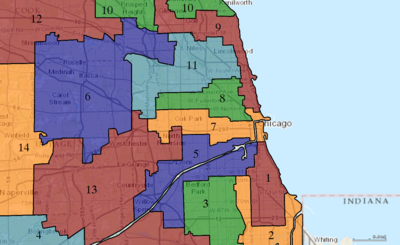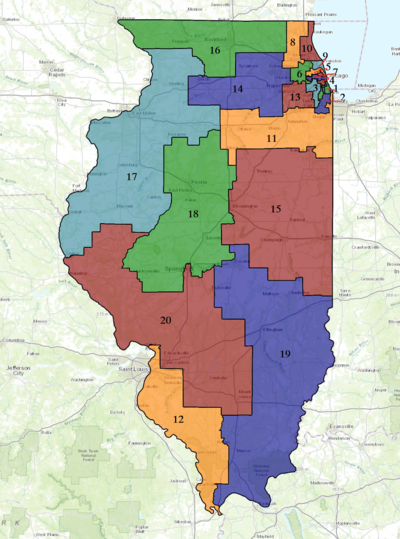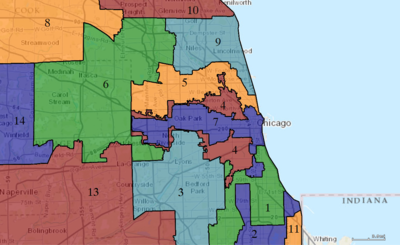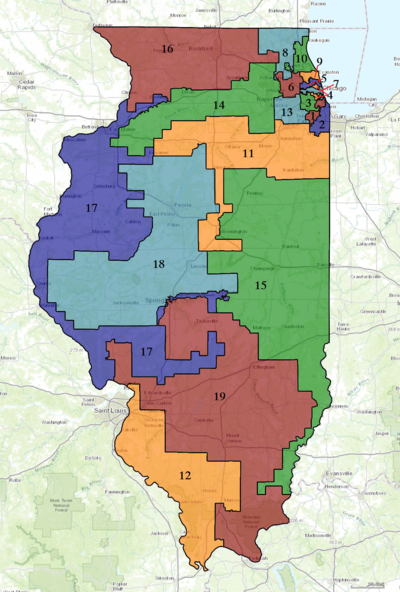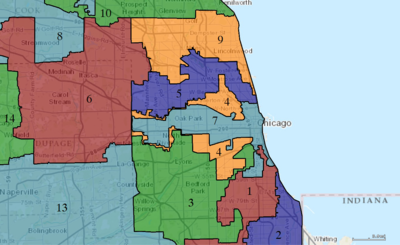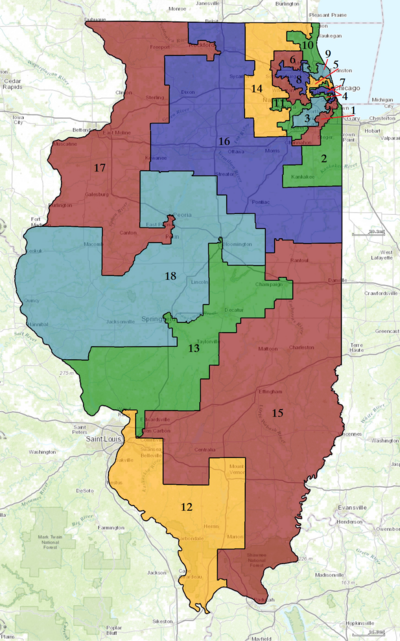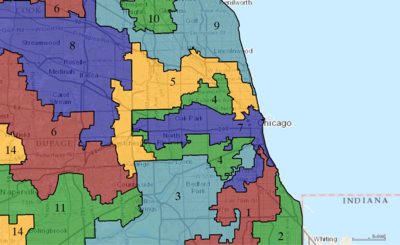
Interactive map version
Illinois is divided into 17 congressional districts, each represented by a member of the United States House of Representatives. The majority of Illinois's districts are located in the Chicago area.
Contents
- Current districts and representatives
- Historical and present district boundaries
- Obsolete districts
- See also
- References
- External links
The Illinois General Assembly has the primary responsibility of redrawing congressional district lines following each decennial census. The governor of Illinois has the power to veto proposed congressional district maps, but the General Assembly has the power to override the veto, with the support of 3/5ths of both chambers. In 1971, 1981, and 1991, the General Assembly was unable to come to an agreement, and the map was drawn up by a panel of three federal judges chosen by Democrats and Republicans. [1] [2]
In 2001, the General Assembly was again unable to reach an agreement, and the task of redrawing district boundaries was given to the Illinois congressional delegation. With unified Democratic control of the General Assembly and governor's office during the 2011 and 2021 redistricting cycles, Democrats have been able to redistrict without input from Republicans, leading to districts gerrymandered to favor the Democratic Party. [2] [3]
In the 2022 midterm elections, per the 2020 United States census, Illinois lost a congressional seat. [4] From a high of 27 congressional seats apportioned to Illinois following the 1910 and 1930 censuses, the state has lost one to two seats in every re-apportionment cycle since 1940, with the exception of the cycle following the 1970 census.






















































